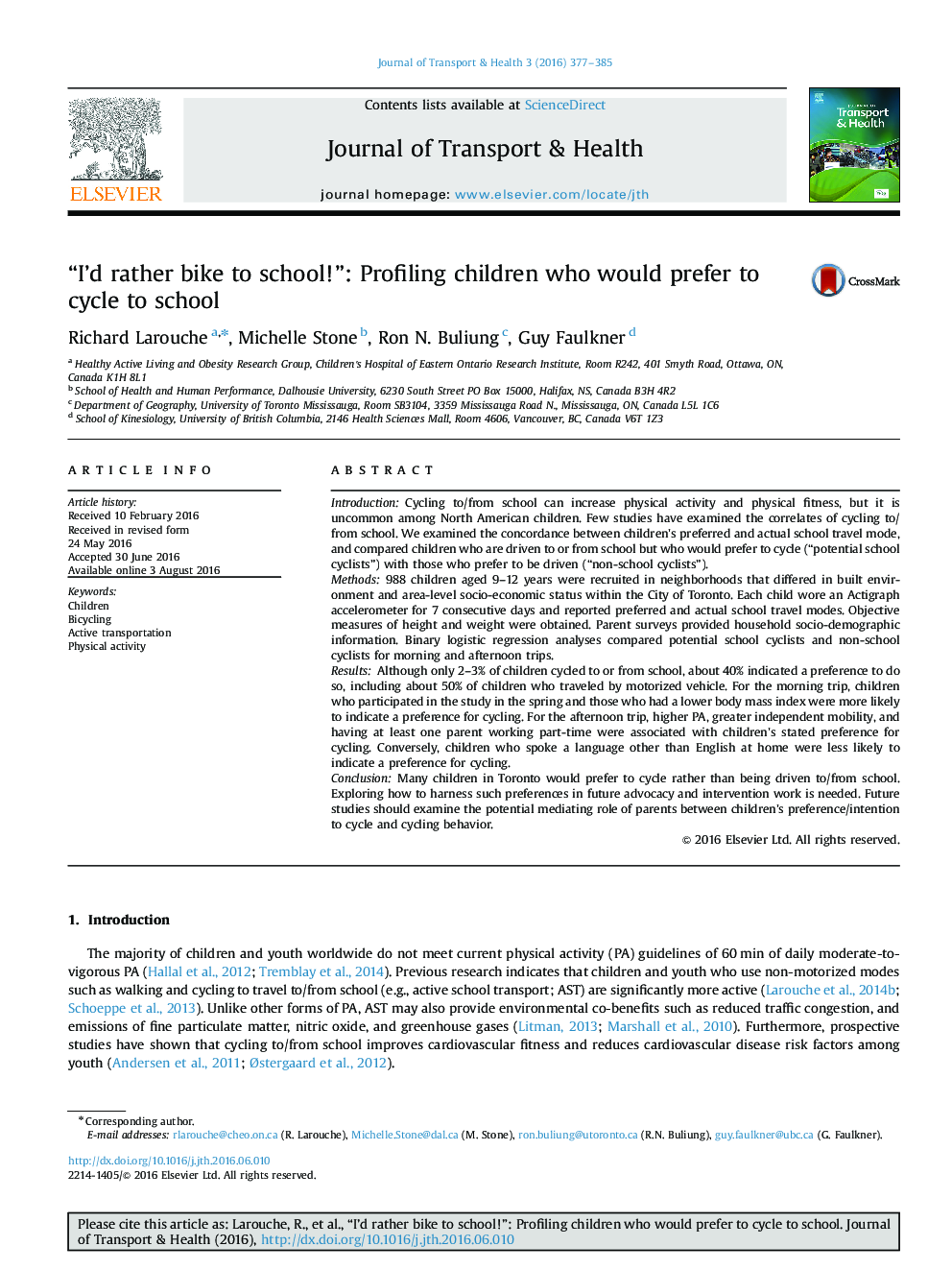| کد مقاله | کد نشریه | سال انتشار | مقاله انگلیسی | نسخه تمام متن |
|---|---|---|---|---|
| 5117926 | 1378143 | 2016 | 9 صفحه PDF | دانلود رایگان |

- Few studies have assessed the correlates of cycling in North American children.
- We compared children׳s actual and preferred school travel modes.
- Only 2-3% of children cycled to or from school, but about 40% would prefer to do so.
- Correlates of stated preference differed between the morning and afternoon trip.
- Future work should examine how to harness children׳s preference in interventions.
IntroductionCycling to/from school can increase physical activity and physical fitness, but it is uncommon among North American children. Few studies have examined the correlates of cycling to/from school. We examined the concordance between children׳s preferred and actual school travel mode, and compared children who are driven to or from school but who would prefer to cycle (“potential school cyclists”) with those who prefer to be driven (“non-school cyclists”).Methods988 children aged 9-12 years were recruited in neighborhoods that differed in built environment and area-level socio-economic status within the City of Toronto. Each child wore an Actigraph accelerometer for 7 consecutive days and reported preferred and actual school travel modes. Objective measures of height and weight were obtained. Parent surveys provided household socio-demographic information. Binary logistic regression analyses compared potential school cyclists and non-school cyclists for morning and afternoon trips.ResultsAlthough only 2-3% of children cycled to or from school, about 40% indicated a preference to do so, including about 50% of children who traveled by motorized vehicle. For the morning trip, children who participated in the study in the spring and those who had a lower body mass index were more likely to indicate a preference for cycling. For the afternoon trip, higher PA, greater independent mobility, and having at least one parent working part-time were associated with children׳s stated preference for cycling. Conversely, children who spoke a language other than English at home were less likely to indicate a preference for cycling.ConclusionMany children in Toronto would prefer to cycle rather than being driven to/from school. Exploring how to harness such preferences in future advocacy and intervention work is needed. Future studies should examine the potential mediating role of parents between children׳s preference/intention to cycle and cycling behavior.
Journal: Journal of Transport & Health - Volume 3, Issue 3, September 2016, Pages 377-385